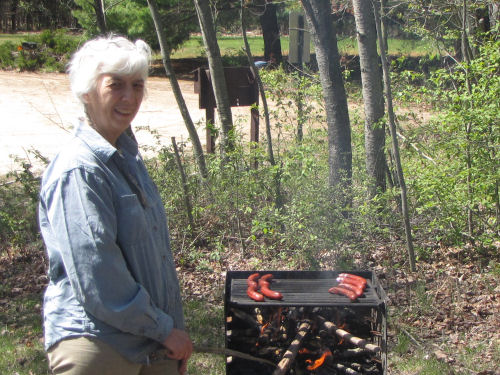Today's plant is Zanthoxylum americanum, Northern Prickly Ash or Toothache Tree. The name translates as yellow wood, although it doesn't impress me as being particularly yellow. Yes, it's sometimes spelled with an X, like the Xanthocephalus, the yellow-headed blackbird. The "problem" is that the Greek letter for X is chi (pronounced KI, and the Greek letter for Z is zeta. In Greek the X doesn't make the ZEE sound, so the translation is done different ways.
The plant is actually in the citrus family, but its fruit is a little berry, not much like a lemon or orange. Here are the blossoms.
Notice the large thorns. Believe me, you will know if you tangle with a prickly ash tree. The trees never get very large. These are about two inches in diameter.
Although it is definitely prickly, it's not an ash. It's just that it has compound leaves, which look rather ash-like. The leaves aren't open yet, but here they are just unfurling.
I'm really tickled to have found a grove of these, because they are a host plant for two butterflies, the Spicebush Swallowtail (a lovely dark butterfly with blue spots), and the Giant Swallowtail (a yellow and black butterfly- the largest one in the United States). I wish this stand was a little closer to where I live so I could check it out more often, but perhaps with my job I can stop by a bit more often.
Toothache Tree comes from the fact that Native Americans chewed the bark or berries to numb their gums, hence relieve tooth pain.
So, there we have the April Alphabet. Tomorrow... back to whatever tickles my fancy, although I've not strayed from my purpose this month. Sometimes I've moved things around by a day or two so they would fit.
I'm beginning to catch up with my favorite bloggers. If you are new reader who plans to come back, WELCOME! I usually answer comments, and I'll start doing that again too. And, I did succeed in visiting all 1722 Challenge Blogs once.
| if you like this blog, click the +1 | |

























